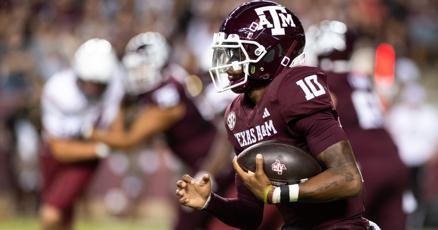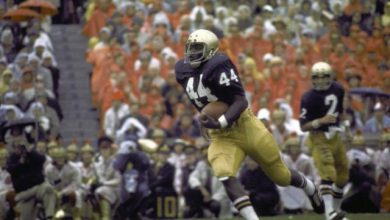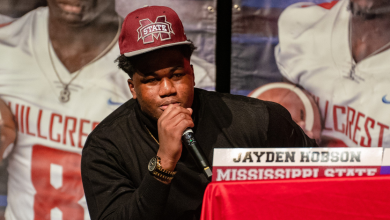Texas A&M student-athletes earned a total of $51.4 million in NIL compensation from July 1, 2024, to June 30, 2025, according to open records data.

College Station, TX — The landscape of college athletics has undergone a seismic shift over the past few years, primarily driven by the emergence of Name, Image, and Likeness (NIL) compensation. This new era allows student-athletes to monetize their personal brands through endorsements, social media promotions, appearances, and other commercial opportunities. As a result, the financial landscape for college athletes has transformed dramatically, prompting widespread discussion about fairness, amateurism, and the future of collegiate sports.
According to recent open records data, Texas A&M University’s student-athletes collectively earned approximately $51.4 million in NIL compensation from July 1, 2024, to June 30, 2025. This figure not only highlights the significant economic impact of NIL at one of the nation’s top athletic programs but also raises important questions about the implications for college sports, athlete development, institutional policies, and the broader sports industry.
The Rise of NIL: A Paradigm Shift in College Sports
The concept of NIL compensation became legally permissible following the NCAA’s interim policy change in July 2021, allowing student-athletes to profit from their personal brands without jeopardizing their amateur status. This policy change was a response to mounting pressure from athletes, lawmakers, and advocates who argued that student-athletes should be able to benefit financially from their talents and popularity.
Since then, the NIL marketplace has expanded rapidly, with athletes across multiple sports leveraging social media, personal appearances, endorsements, and even entrepreneurial ventures to generate income. For elite programs like Texas A&M, which consistently compete at the highest levels nationally, NIL revenue has become an integral component of student-athlete experience and program competitiveness.
Texas A&M’s NIL Economy: A Closer Look
The recent data revealing that Texas A&M student-athletes earned $51.4 million in NIL compensation over a one-year period underscores the university’s position as a powerhouse in NIL earnings. This figure, obtained through an open records request, reflects the combined earnings of all NIL-eligible athletes across various sports, including football, basketball, baseball, and others.
Key Highlights:
- Major Contributors: Unsurprisingly, football and men’s basketball athletes dominate the NIL earnings, given their extensive media exposure and commercial appeal. Texas A&M’s football team, in particular, has a passionate fan base, high-profile games, and a strong social media presence, all of which contribute to lucrative NIL opportunities.
- Top Earners: While the exact breakdown of individual earnings is private, reports suggest that some of the top earning athletes at Texas A&M have earned hundreds of thousands of dollars annually, with standout athletes possibly surpassing the $1 million mark in NIL income.
- Distribution of Funds: The total NIL earnings are distributed across numerous athletes, with a relatively small percentage of athletes accounting for the majority of the income, reflecting the competitive advantage of star players.
Factors Driving NIL Earnings at Texas A&M
Several factors contribute to Texas A&M’s high NIL earnings:
- Large and Engaged Fan Base: Texas A&M boasts one of the most passionate and sizable fan bases in college sports. This fan engagement translates into more lucrative endorsement opportunities and social media collaborations for athletes.
- Successful Athletic Programs: The university’s consistent success in football, baseball, and other sports enhances athlete visibility, making them attractive endorsers for brands.
- Location and Market Size: Situated in College Station, Texas, the university benefits from proximity to major markets like Houston, Dallas, and San Antonio, broadening potential NIL opportunities.
- Institutional Support: Texas A&M has developed a comprehensive NIL support system, including partnerships with NIL management firms, compliance guidance, and educational programs to help athletes navigate monetization strategies.
- Social Media Savvy Athletes: Many Texas A&M athletes have built large social media followings, which serve as platforms for endorsement deals and sponsored content.
Implications of the $51.4 Million Figure
The reported NIL earnings bring to light several important considerations for the college sports community:
1. Athletic and Academic Balance
While NIL revenue offers athletes financial benefits, it also raises concerns about maintaining focus on academics and athletic commitments. Universities must ensure that NIL opportunities do not become a distraction or create inequalities among athletes.
2. Fairness and Equity
The disparity in NIL earnings among athletes reflects existing inequalities in sports popularity and media exposure. Star athletes at major programs tend to earn significantly more than others, prompting debates about fairness and the potential for creating a “pay-for-play” environment within the amateur framework.
3. Impact on Recruiting and Competition
High NIL earning potential can influence recruiting, with programs like Texas A&M attracting athletes partly due to lucrative NIL opportunities. This dynamic could alter traditional recruiting strategies and competitive balance among schools.
4. Institutional Policies and Governance
Universities must develop clear policies governing NIL activities to prevent conflicts of interest, ensure compliance with state laws, and protect the integrity of collegiate athletics. Texas A&M’s proactive approach in establishing NIL support systems serves as a model for other institutions.
5. Legal and Regulatory Challenges
The NIL landscape continues to evolve, with ongoing legal debates and potential federal legislation shaping future policies. Ensuring transparency and fairness remains a priority for regulators, schools, and athlete representatives.
Broader Industry Impact
The $51.4 million figure reflects the broader economic impact of NIL at the national level. Industry analysts estimate that college athletes collectively earn hundreds of millions of dollars annually across the country, with some top athletes generating multimillion-dollar incomes.
This economic shift has led to:
- Emergence of NIL Agencies: Companies specializing in athlete branding and NIL management have proliferated, offering services to maximize earnings.
- Brand Partnerships and Endorsements: Major corporations are increasingly engaging with college athletes for marketing campaigns, recognizing their influence among younger demographics.
- Media and Content Creation: Athletes are leveraging platforms like TikTok, Instagram, and YouTube to monetize their content and build personal brands.
Ethical and Cultural Considerations
While NIL has created opportunities for financial empowerment, it also raises ethical questions:
- Amateurism and Tradition: Critics argue that NIL payments undermine the amateur status of college athletes, challenging the traditional values of collegiate sports.
- Potential Exploitation: Concerns exist about athlete exploitation by third-party agents or companies seeking to capitalize on their fame.
- Educational Priorities: There’s ongoing debate about whether athletes receive adequate education about managing income, contracts, and financial literacy.
The Future of NIL at Texas A&M and Beyond
Looking ahead, the NIL landscape is poised for continued growth and evolution. For Texas A&M, maintaining its competitive edge will involve:
- Expanding NIL Education: Providing athletes with resources to understand contracts, taxes, and branding.
- Building Strategic Partnerships: Collaborating with local and national brands to maximize athlete earnings.
- Ensuring Equity: Creating opportunities for a broader base of athletes beyond just the star performers.
- Monitoring Regulatory Changes: Staying compliant with evolving state and federal policies governing NIL activities.
Nationally, lawmakers and regulators are considering legislation to establish clearer guidelines and protections for student-athletes. The NCAA continues to adapt its policies, balancing athlete rights with the integrity of college sports.
The revelation that Texas A&M student-athletes earned approximately $51.4 million in NIL compensation from July 2024 to June 2025 underscores the profound economic transformation within college athletics. This figure exemplifies how the NIL era has altered the traditional amateur landscape, offering athletes unprecedented opportunities to monetize their talents and personal brands.
While the benefits are clear, challenges remain. Ensuring fair play, maintaining educational priorities, and safeguarding athlete welfare are critical considerations as the NIL market continues to expand. Texas A&M’s experience provides valuable insights into how institutions can navigate this new terrain—balancing athlete empowerment with institutional integrity.
As NIL continues to evolve, the key will be fostering a sustainable environment where student-athletes can thrive both academically and financially, ensuring the long-term health and fairness of college sports. The $51.4 million milestone not only highlights the current state of NIL at Texas A&M but also signals a future where collegiate athletics are increasingly intertwined with the burgeoning sports economy.









